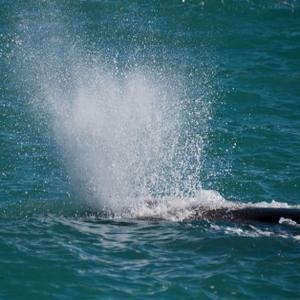
Conservationists working with Sakhalin Energy Investment Co Ltd in Russia from 2006-12 said the tiny population of endangered Western Grey whales had risen about 3% a year to 140, despite seismic testing near their feeding grounds.
Seismic testing bounces sound waves into the seabed to seek deposits of oil and gas. It can harm whales and other marine life with blasts of 230 to 250 decibels, so loud that they that can sometimes be detected 4 000 km away.
Effect of seismic testing
"This work helps to set a standard," Carl Gustaf Lundin, director of the global marine and polar programme at the IUCN (International Union for Conservation of Nature), told Reuters.
"Once you have raised the bar... other companies will look bad if they are not deploying it," he said. The IUCN includes governments, scientists and conservation organisations and is the world's biggest environmental alliance.
He said there was no sign of "significant direct impact on the whales" from the testing off Sakhalin island north of Japan. Sakhalin Energy groupaxs Gazprom, Royal Dutch Shell, Mitsui and Mitsubishi.
A common and worrying effect of seismic testing was that the whales move away from their normal feeding grounds, Doug Nowacek of Duke University, lead author of the findings published in the journal Aquatic Mammals, told Reuters.
"The potential exists, if animals get too close (to testing areas), for trauma and injury," he said, adding that to his knowledge no such cases have been documented.
Minimum impact
The IUCN said the guidelines called for thorough advance study of wildlife to help decide when it was best to carry out seismic tests, limiting noise levels, halting surveys if animals were seen in the area and follow-up monitoring.
"This is a comprehensive guidebook for how to do this with minimal impact," said Nowacek.
Off Sakhalin, for instance, understanding whale migrations meant it was best to do seismic testing in spring, after ice had melted but before many whales had returned to the region.
Whale sightings also varied a lot from year to year.
"A clear message is that it is not enough to send out a few people for a week or two in a boat and then decide how many whales there are," said Greg Donovan, who chairs an IUCN group looking into the problem of the whales and seismic surveys.
More stringent guidelines would tend to push up costs of environmental monitoring, especially if it meant million-dollar delays to drilling. On the other hand, harming wildlife could damage companies' reputations.
Whales are especially vulnerable to seismic testing.
"Whales rely on sound for communication, navigation and foraging," an IUCN statement said. "Exposure to loud noise from seismic surveys can result in stress and behaviour changes, affect foraging and nursing, or cause direct physical damage."




 Publications
Publications
 Partners
Partners














